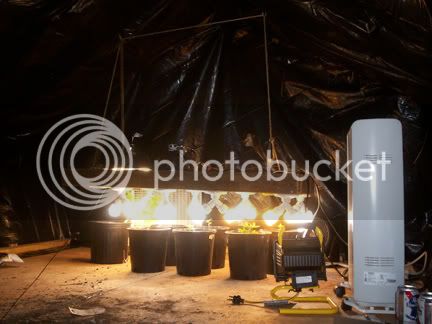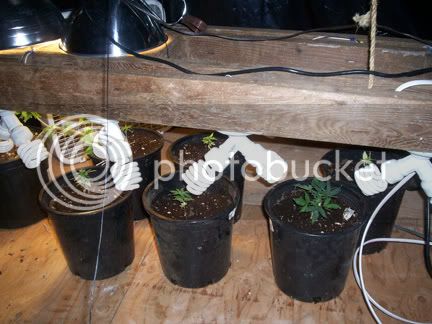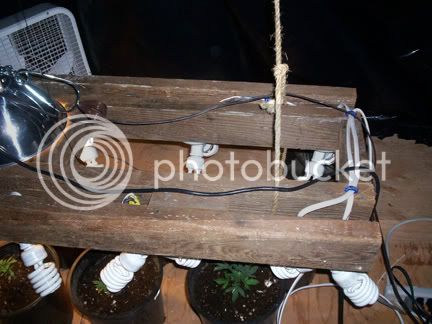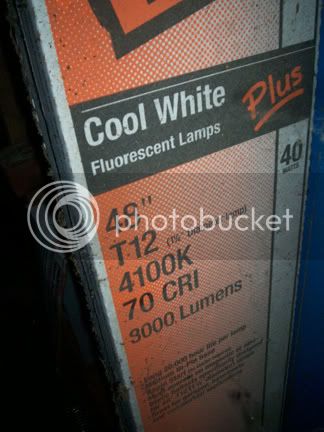So, I built this last night after transplanting each of my sprouts into gallon pots.



There are (8) ceramic lamp bases screwed to 2x4s and wired in series. (2) 27w cool white CFLs producing 1300 lumens is screwed into each base through a "Y" adaptor. There are two rows of (4) bases, one foot apart, therefor taking up 3 sq ft. My grow area is a bit larger, and growing, so I figure the 20,800 lumens is actually being divided between around 8 sq ft, so the efficiency is only around 2600 lumens/sq ft.
I am planning on installing reflectors on the sides to take advantage of the otherwise lost lumens, too.
This was more of an exercise in what could be done and not necessarily what should be done. I found some of these:

in my garage (must have been left by the previous owners) and I figure a pair of 2-bulb 4' fixtures would be cheaper, safer, and put out more light.
questions or comments?



There are (8) ceramic lamp bases screwed to 2x4s and wired in series. (2) 27w cool white CFLs producing 1300 lumens is screwed into each base through a "Y" adaptor. There are two rows of (4) bases, one foot apart, therefor taking up 3 sq ft. My grow area is a bit larger, and growing, so I figure the 20,800 lumens is actually being divided between around 8 sq ft, so the efficiency is only around 2600 lumens/sq ft.
I am planning on installing reflectors on the sides to take advantage of the otherwise lost lumens, too.
This was more of an exercise in what could be done and not necessarily what should be done. I found some of these:

in my garage (must have been left by the previous owners) and I figure a pair of 2-bulb 4' fixtures would be cheaper, safer, and put out more light.
questions or comments?


